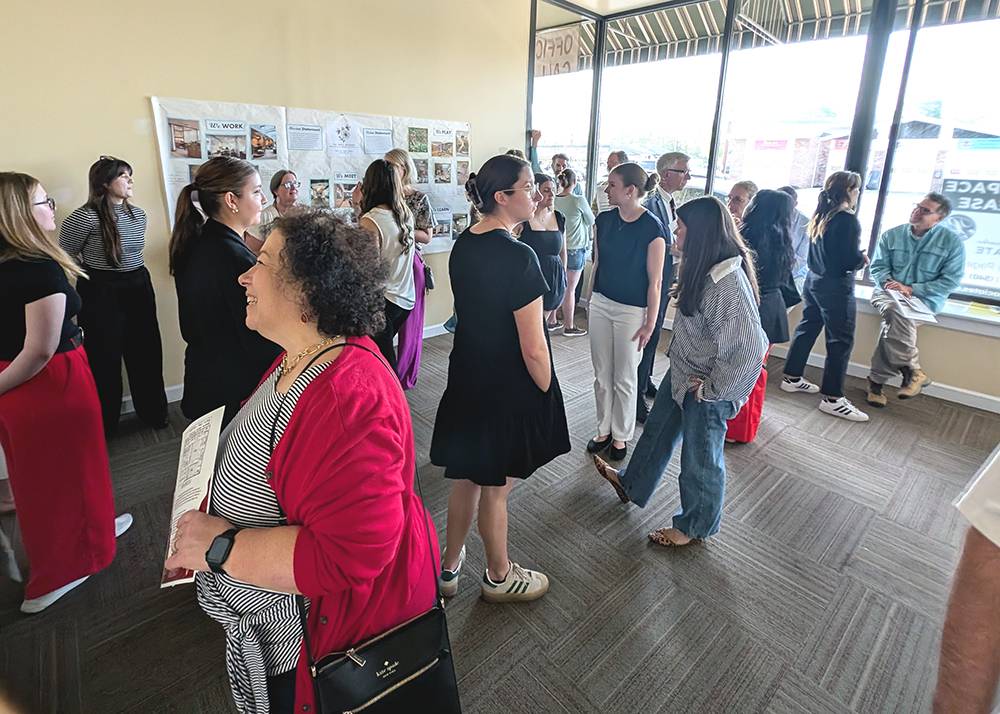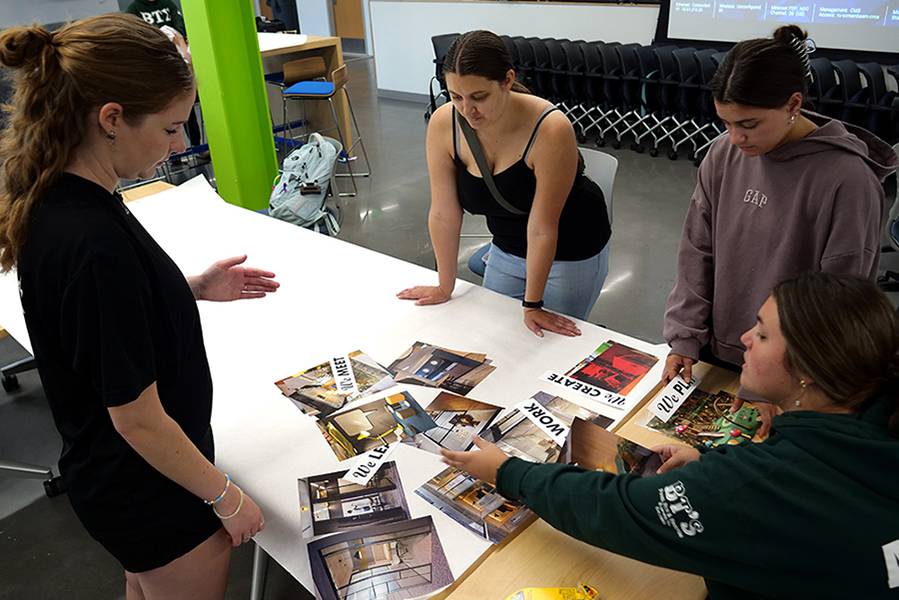
Senior interior design students at Radford University have been lending their creative talents to the revitalization of the city’s east-side downtown corridor through a dynamic partnership with local developer Taylor Hollow Management.
Their contributions are part of course work for the Senior Studio II interior design class taught by Professor Laura Kimball. The course addresses hospitality, retail and restaurant design, capping years of building skills and problem-solving in designing residential and non-residential interiors.
In the past, projects were frequently rooted in theoretical spaces, but the City of Radford’s revitalization efforts offered the students real world spaces to work with, especially since the most recent endeavors have been on the east end of the city near the university.
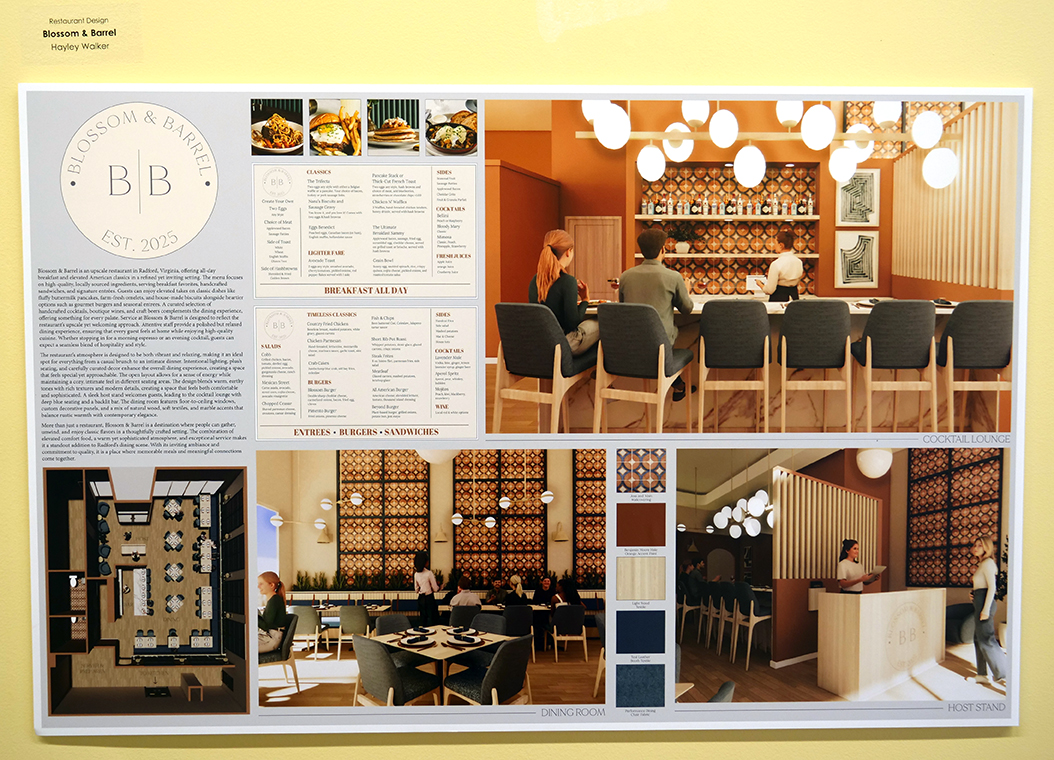
Kimball said this is good for the town, its citizens, the students and the university.
“Empty spaces make a city look derelict,” Kimball explained. “So, this is a way to envision possibilities for some of the empty storefronts to create a space that is welcoming and exciting for the community and the students.”
The first student project was a proposal for a vacant restaurant space just off Main Street on Third Avenue. Their assignment was to propose a novel restaurant idea for the historic building with seating for up to 45 patrons and optional bar areas. Students developed comprehensive plans including branding, floor plans, lighting concepts, and accessibility solutions.
Students were required to support their ideas with research as well, and analyzed market gaps, local competition, and the city's diverse user groups. The space had to offer something for students, families, visitors and perhaps most importantly, the town’s year-round residents.
“It had to be a place the community would enjoy,” said Kimball, “because the community needs to be an active participant in keeping a business alive, especially in the summer when the students are gone.”
Final proposals were then shared with the property management team at Taylor Hollow, city stakeholders, and potential restaurateurs for review. In March, they received feedback from Sam Fortier, Project Manager for Taylor Hollow.
Fortier also took the students on a walk-through of their next space at 1095 East Main Street, a large building that has had many incarnations over the years. Here they had a unique set of circumstances that would affect how they approached the problem.
Fortier explained that about 17 years ago, they renovated the space to meet the needs of a long-term client, building out offices and other interiors useful to that client. However, the structure is now vacant and offered a good learning opportunity for the young designers.

“So that's why we're looking at potential alternatives,” Fortier said. “The students are basically looking at the space and they're doing a design charrette to evaluate and see what they think would be a good suggestion.”
“We don't have any tenants who are actively looking at the space right now, which means that they're pretty free to change things, move things around.”
That freedom allows the students to think in creative ways, but it still requires they think about realistic options for the space and consider factors like cost of renovation, who would use it, local needs and demand for services.
After students toured the facilities and gained a sense of the space, they returned to the classroom and began brainstorming in teams to develop possibilities. Then, on April 29, they brought their ideas forward to developers and business leaders in Radford.
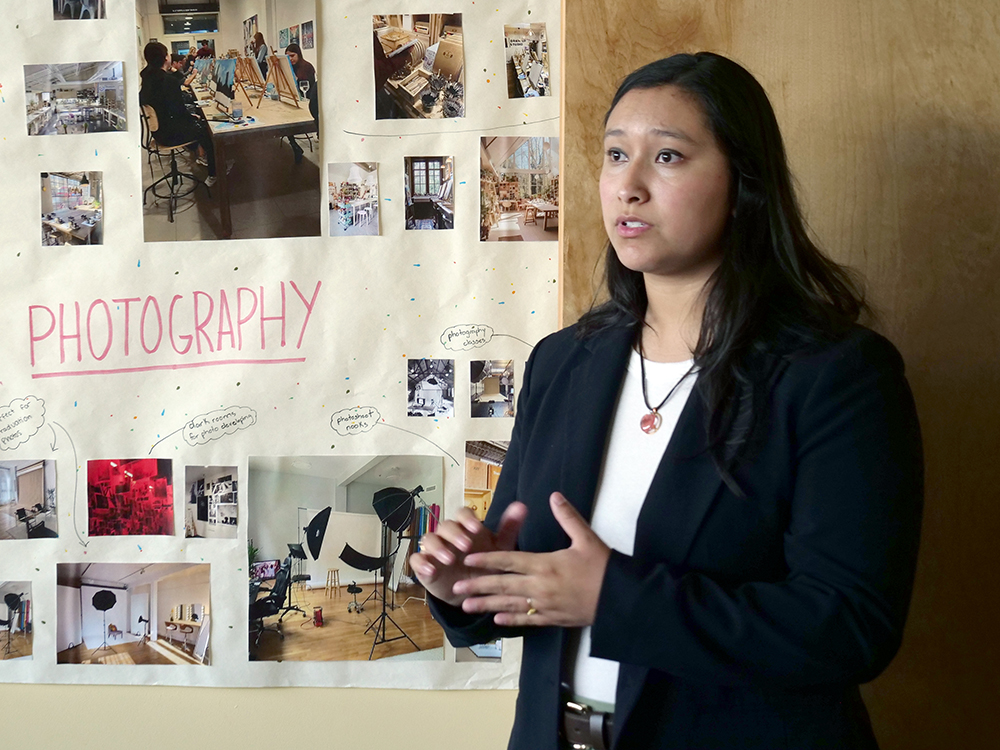
Each group laid out their revitalization ideas on wall boards, explaining their logic and research and fielding questions. Among the ideas were a gaming center, a reuse and secondhand facility, and a maker space and arts center.
One team proposed a multi-use collaborative workspace patterned on the WeWork model. In this vision, clients could rent out studios, offices, studios and conference areas while having onsite daycare for play and learning.
“It fits the demographics in the Radford community,” Madison Burtner explained. “Workers, students, creators, business owners can all use it and have a safe place for their kids to play.”
“So, if you work at home and need to have a meeting but have kids, you are not held back by that and it also helps to create jobs for high school and college students in childcare, which is a big industry for that group.”
Projects like this offer real value because they give students the chance to learn from and work with various local professionals before they enter the job market, giving them an edge as they enter the professional world.
Senior Maddison Kunkel’s group presented two proposals, one for a children’s theater and an alternative for a children’s museum. Their group noted the current lack of theater arts opportunities for youngsters in Radford and argued that such a facility would not only provide creative outlets but social benefits as well.
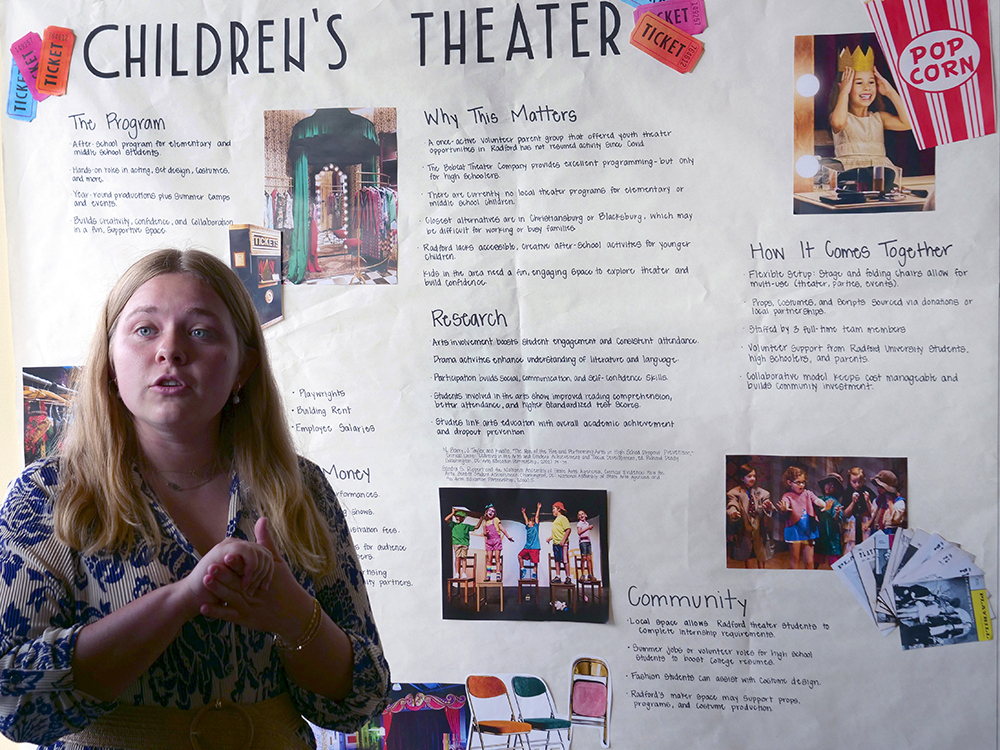
Kunkel said that, in the charrette process, making connections with the community was one of the most important aspects and it helped her develop the collaboration skills needed to succeed in real world settings.
“It’s great to be able to connect to the community,” Kunkel commented, “because I feel like being separated from where you are locally doesn’t benefit anybody.”
“Those connections don’t just benefit us, but they can benefit future students as well,” she said, noting how the project has opened doors between Radford University and Radford City.
